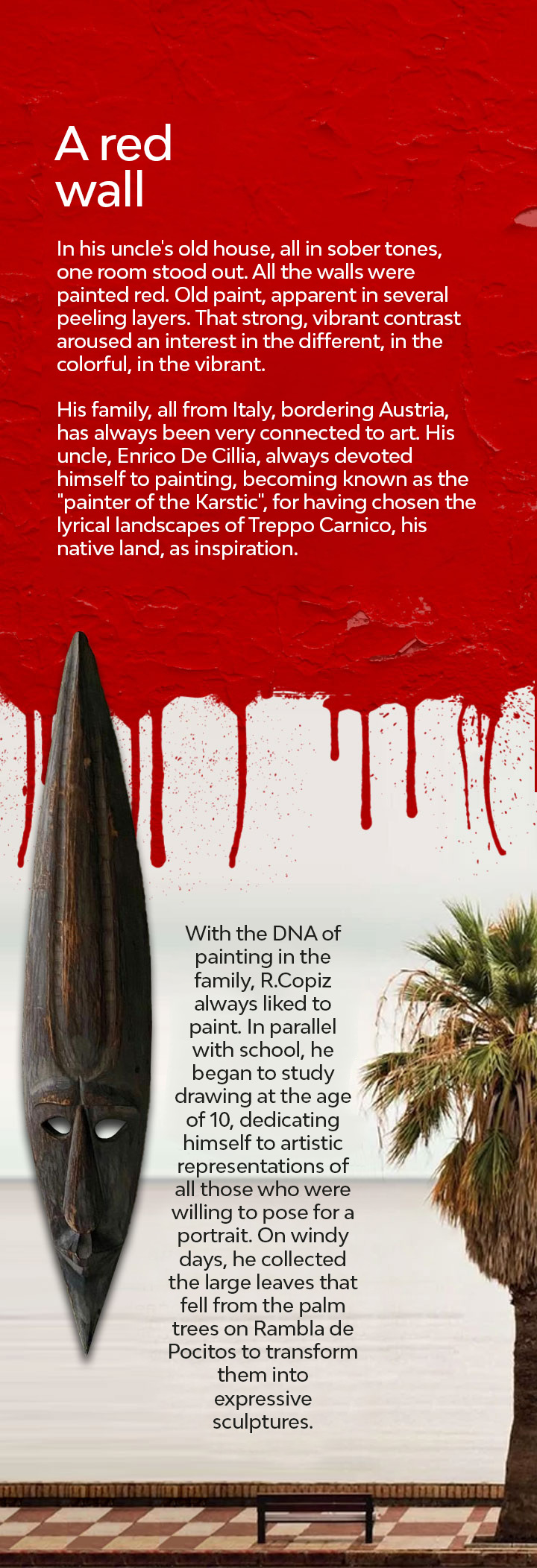A red
wall
In his uncle’s old house, all in sober tones, one room stood out. All the walls were painted red. Old paint, apparent in several peeling layers. That strong, vibrant contrast aroused an interest in the different, in the colorful, in the vibrant. His family, all from Italy, bordering Austria, has always been very connected to art. His uncle, Enrico De Cillia, always devoted himself to painting, becoming known as the “painter of the Karstic”, for having chosen the lyrical landscapes of Treppo Carnico, his native land, as inspiration.









